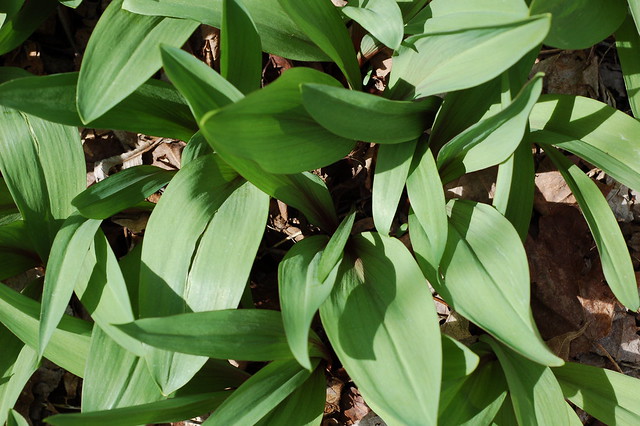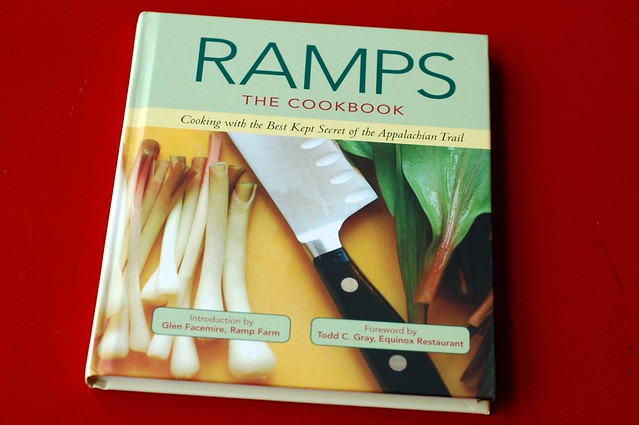Responsible Ramp Harvesting
Friday, April 22, 2016
It's been five years since I first went ramp foraging and although I still love this wonderful, wild delicacy, my approach has changed dramatically.
In light of the fact that these slow-growing, wild plants are quickly being wiped out by our voracious appetite for them, I no longer dig up whole plants. Instead, I snip a single leaf from each plant. Just as delicious and a whole lot more sustainable.
So if you are lucky enough to find a patch of wild ramps, please treat them with the respect they deserve. And it's probably best if you do not tell anyone else about them, lest they fail to act with restraint.
In addition, it would be helpful if you do not purchase whole ramps at grocery stores, specialty shops, restaurants, etc., since doing so simply feeds the problem.
Instead, talk to the shop owner, chef, etc., to gently express your concern and encourage them to stop using whole ramps and instead work only with providers who they know harvest responsibly (leaves only!)
I was so pleased to see this sign at Adams, a local supermarket today!
This does not mean you cannot continue to enjoy ramps! I certainly plan to... Below are some ways you might like them and here is a whole book of good ways to enjoy them (cover photo by yours truly).
Please consider planting some ramps of your own if you have the right type of land for them. Ramps favor sandy, moist soils and are often found near streams though you might also find them carpeting the forest floor where beech, birch, poplar and/or sugar maple trees are found. You can order seeds or bulbs (seeds are cheaper, bulbs are faster) from The Ramp Farm in West Virginia. We have done both as well as transplanting a few plants from the woods and our little patch is thriving.
You might also like:
Friday, April 22, 2016
Responsible Ramp Harvesting
It's been five years since I first went ramp foraging and although I still love this wonderful, wild delicacy, my approach has changed dramatically.
In light of the fact that these slow-growing, wild plants are quickly being wiped out by our voracious appetite for them, I no longer dig up whole plants. Instead, I snip a single leaf from each plant. Just as delicious and a whole lot more sustainable.
So if you are lucky enough to find a patch of wild ramps, please treat them with the respect they deserve. And it's probably best if you do not tell anyone else about them, lest they fail to act with restraint.
In addition, it would be helpful if you do not purchase whole ramps at grocery stores, specialty shops, restaurants, etc., since doing so simply feeds the problem.
Instead, talk to the shop owner, chef, etc., to gently express your concern and encourage them to stop using whole ramps and instead work only with providers who they know harvest responsibly (leaves only!)
I was so pleased to see this sign at Adams, a local supermarket today!
This does not mean you cannot continue to enjoy ramps! I certainly plan to... Below are some ways you might like them and here is a whole book of good ways to enjoy them (cover photo by yours truly).
Please consider planting some ramps of your own if you have the right type of land for them. Ramps favor sandy, moist soils and are often found near streams though you might also find them carpeting the forest floor where beech, birch, poplar and/or sugar maple trees are found. You can order seeds or bulbs (seeds are cheaper, bulbs are faster) from The Ramp Farm in West Virginia. We have done both as well as transplanting a few plants from the woods and our little patch is thriving.
You might also like:





No comments:
Post a Comment